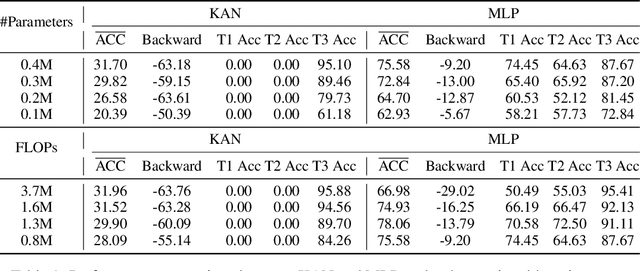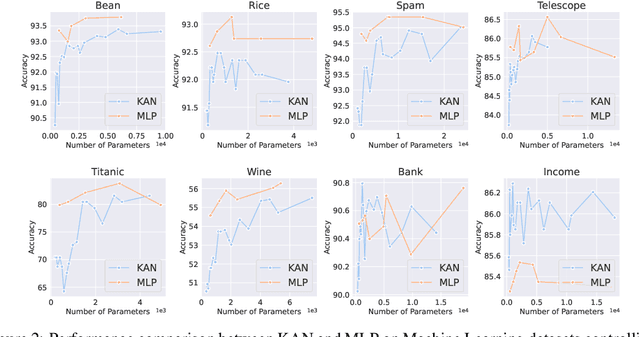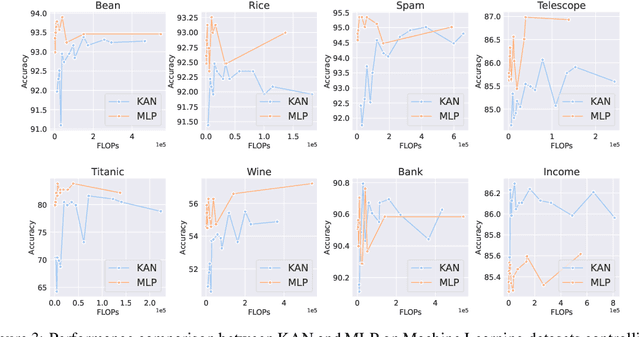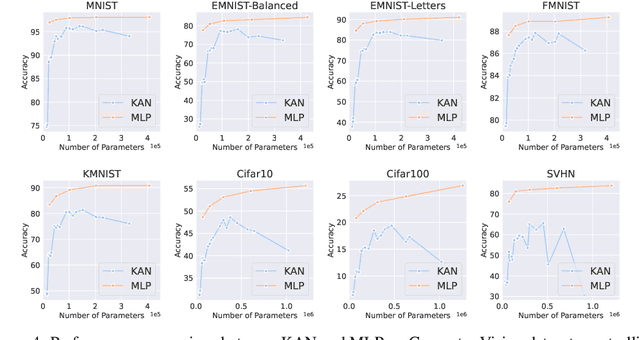Weihao Yu
X$^{2}$-Gaussian: 4D Radiative Gaussian Splatting for Continuous-time Tomographic Reconstruction
Mar 27, 2025Abstract:Four-dimensional computed tomography (4D CT) reconstruction is crucial for capturing dynamic anatomical changes but faces inherent limitations from conventional phase-binning workflows. Current methods discretize temporal resolution into fixed phases with respiratory gating devices, introducing motion misalignment and restricting clinical practicality. In this paper, We propose X$^2$-Gaussian, a novel framework that enables continuous-time 4D-CT reconstruction by integrating dynamic radiative Gaussian splatting with self-supervised respiratory motion learning. Our approach models anatomical dynamics through a spatiotemporal encoder-decoder architecture that predicts time-varying Gaussian deformations, eliminating phase discretization. To remove dependency on external gating devices, we introduce a physiology-driven periodic consistency loss that learns patient-specific breathing cycles directly from projections via differentiable optimization. Extensive experiments demonstrate state-of-the-art performance, achieving a 9.93 dB PSNR gain over traditional methods and 2.25 dB improvement against prior Gaussian splatting techniques. By unifying continuous motion modeling with hardware-free period learning, X$^2$-Gaussian advances high-fidelity 4D CT reconstruction for dynamic clinical imaging. Project website at: https://x2-gaussian.github.io/.
Polyp-Gen: Realistic and Diverse Polyp Image Generation for Endoscopic Dataset Expansion
Jan 29, 2025



Abstract:Automated diagnostic systems (ADS) have shown significant potential in the early detection of polyps during endoscopic examinations, thereby reducing the incidence of colorectal cancer. However, due to high annotation costs and strict privacy concerns, acquiring high-quality endoscopic images poses a considerable challenge in the development of ADS. Despite recent advancements in generating synthetic images for dataset expansion, existing endoscopic image generation algorithms failed to accurately generate the details of polyp boundary regions and typically required medical priors to specify plausible locations and shapes of polyps, which limited the realism and diversity of the generated images. To address these limitations, we present Polyp-Gen, the first full-automatic diffusion-based endoscopic image generation framework. Specifically, we devise a spatial-aware diffusion training scheme with a lesion-guided loss to enhance the structural context of polyp boundary regions. Moreover, to capture medical priors for the localization of potential polyp areas, we introduce a hierarchical retrieval-based sampling strategy to match similar fine-grained spatial features. In this way, our Polyp-Gen can generate realistic and diverse endoscopic images for building reliable ADS. Extensive experiments demonstrate the state-of-the-art generation quality, and the synthetic images can improve the downstream polyp detection task. Additionally, our Polyp-Gen has shown remarkable zero-shot generalizability on other datasets. The source code is available at https://github.com/CUHK-AIM-Group/Polyp-Gen.
Attention Prompting on Image for Large Vision-Language Models
Sep 25, 2024Abstract:Compared with Large Language Models (LLMs), Large Vision-Language Models (LVLMs) can also accept images as input, thus showcasing more interesting emergent capabilities and demonstrating impressive performance on various vision-language tasks. Motivated by text prompting in LLMs, visual prompting has been explored to enhance LVLMs' capabilities of perceiving visual information. However, previous visual prompting techniques solely process visual inputs without considering text queries, limiting the models' ability to follow text instructions to complete tasks. To fill this gap, in this work, we propose a new prompting technique named Attention Prompting on Image, which just simply overlays a text-query-guided attention heatmap on the original input image and effectively enhances LVLM on various tasks. Specifically, we generate an attention heatmap for the input image dependent on the text query with an auxiliary model like CLIP. Then the heatmap simply multiplies the pixel values of the original image to obtain the actual input image for the LVLM. Extensive experiments on various vison-language benchmarks verify the effectiveness of our technique. For example, Attention Prompting on Image improves LLaVA-1.5 by 3.8% and 2.9% on MM-Vet and LLaVA-Wild benchmarks, respectively.
LinFusion: 1 GPU, 1 Minute, 16K Image
Sep 03, 2024Abstract:Modern diffusion models, particularly those utilizing a Transformer-based UNet for denoising, rely heavily on self-attention operations to manage complex spatial relationships, thus achieving impressive generation performance. However, this existing paradigm faces significant challenges in generating high-resolution visual content due to its quadratic time and memory complexity with respect to the number of spatial tokens. To address this limitation, we aim at a novel linear attention mechanism as an alternative in this paper. Specifically, we begin our exploration from recently introduced models with linear complexity, e.g., Mamba, Mamba2, and Gated Linear Attention, and identify two key features-attention normalization and non-causal inference-that enhance high-resolution visual generation performance. Building on these insights, we introduce a generalized linear attention paradigm, which serves as a low-rank approximation of a wide spectrum of popular linear token mixers. To save the training cost and better leverage pre-trained models, we initialize our models and distill the knowledge from pre-trained StableDiffusion (SD). We find that the distilled model, termed LinFusion, achieves performance on par with or superior to the original SD after only modest training, while significantly reducing time and memory complexity. Extensive experiments on SD-v1.5, SD-v2.1, and SD-XL demonstrate that LinFusion delivers satisfactory zero-shot cross-resolution generation performance, generating high-resolution images like 16K resolution. Moreover, it is highly compatible with pre-trained SD components, such as ControlNet and IP-Adapter, requiring no adaptation efforts. Codes are available at https://github.com/Huage001/LinFusion.
MM-Vet v2: A Challenging Benchmark to Evaluate Large Multimodal Models for Integrated Capabilities
Aug 01, 2024



Abstract:MM-Vet, with open-ended vision-language questions targeting at evaluating integrated capabilities, has become one of the most popular benchmarks for large multimodal model evaluation. MM-Vet assesses six core vision-language (VL) capabilities: recognition, knowledge, spatial awareness, language generation, OCR, and math. However, its question format is restricted to single image-text pairs, lacking the interleaved image and text sequences prevalent in real-world scenarios. To address this limitation, we introduce MM-Vet v2, which includes a new VL capability called "image-text sequence understanding", evaluating models' ability to process VL sequences. Furthermore, we maintain the high quality of evaluation samples while further expanding the evaluation set size. Using MM-Vet v2 to benchmark large multimodal models, we found that Claude 3.5 Sonnet is the best model with a score of 71.8, slightly outperforming GPT-4o which scored 71.0. Among open-weight models, InternVL2-Llama3-76B leads with a score of 68.4.
KAN or MLP: A Fairer Comparison
Jul 23, 2024



Abstract:This paper does not introduce a novel method. Instead, it offers a fairer and more comprehensive comparison of KAN and MLP models across various tasks, including machine learning, computer vision, audio processing, natural language processing, and symbolic formula representation. Specifically, we control the number of parameters and FLOPs to compare the performance of KAN and MLP. Our main observation is that, except for symbolic formula representation tasks, MLP generally outperforms KAN. We also conduct ablation studies on KAN and find that its advantage in symbolic formula representation mainly stems from its B-spline activation function. When B-spline is applied to MLP, performance in symbolic formula representation significantly improves, surpassing or matching that of KAN. However, in other tasks where MLP already excels over KAN, B-spline does not substantially enhance MLP's performance. Furthermore, we find that KAN's forgetting issue is more severe than that of MLP in a standard class-incremental continual learning setting, which differs from the findings reported in the KAN paper. We hope these results provide insights for future research on KAN and other MLP alternatives. Project link: https://github.com/yu-rp/KANbeFair
GTP-4o: Modality-prompted Heterogeneous Graph Learning for Omni-modal Biomedical Representation
Jul 08, 2024Abstract:Recent advances in learning multi-modal representation have witnessed the success in biomedical domains. While established techniques enable handling multi-modal information, the challenges are posed when extended to various clinical modalities and practical modalitymissing setting due to the inherent modality gaps. To tackle these, we propose an innovative Modality-prompted Heterogeneous Graph for Omnimodal Learning (GTP-4o), which embeds the numerous disparate clinical modalities into a unified representation, completes the deficient embedding of missing modality and reformulates the cross-modal learning with a graph-based aggregation. Specially, we establish a heterogeneous graph embedding to explicitly capture the diverse semantic properties on both the modality-specific features (nodes) and the cross-modal relations (edges). Then, we design a modality-prompted completion that enables completing the inadequate graph representation of missing modality through a graph prompting mechanism, which generates hallucination graphic topologies to steer the missing embedding towards the intact representation. Through the completed graph, we meticulously develop a knowledge-guided hierarchical cross-modal aggregation consisting of a global meta-path neighbouring to uncover the potential heterogeneous neighbors along the pathways driven by domain knowledge, and a local multi-relation aggregation module for the comprehensive cross-modal interaction across various heterogeneous relations. We assess the efficacy of our methodology on rigorous benchmarking experiments against prior state-of-the-arts. In a nutshell, GTP-4o presents an initial foray into the intriguing realm of embedding, relating and perceiving the heterogeneous patterns from various clinical modalities holistically via a graph theory. Project page: https://gtp-4-o.github.io/.
EndoSparse: Real-Time Sparse View Synthesis of Endoscopic Scenes using Gaussian Splatting
Jul 01, 2024



Abstract:3D reconstruction of biological tissues from a collection of endoscopic images is a key to unlock various important downstream surgical applications with 3D capabilities. Existing methods employ various advanced neural rendering techniques for photorealistic view synthesis, but they often struggle to recover accurate 3D representations when only sparse observations are available, which is usually the case in real-world clinical scenarios. To tackle this {sparsity} challenge, we propose a framework leveraging the prior knowledge from multiple foundation models during the reconstruction process, dubbed as \textit{EndoSparse}. Experimental results indicate that our proposed strategy significantly improves the geometric and appearance quality under challenging sparse-view conditions, including using only three views. In rigorous benchmarking experiments against state-of-the-art methods, \textit{EndoSparse} achieves superior results in terms of accurate geometry, realistic appearance, and rendering efficiency, confirming the robustness to sparse-view limitations in endoscopic reconstruction. \textit{EndoSparse} signifies a steady step towards the practical deployment of neural 3D reconstruction in real-world clinical scenarios. Project page: https://endo-sparse.github.io/.
MambaOut: Do We Really Need Mamba for Vision?
May 14, 2024Abstract:Mamba, an architecture with RNN-like token mixer of state space model (SSM), was recently introduced to address the quadratic complexity of the attention mechanism and subsequently applied to vision tasks. Nevertheless, the performance of Mamba for vision is often underwhelming when compared with convolutional and attention-based models. In this paper, we delve into the essence of Mamba, and conceptually conclude that Mamba is ideally suited for tasks with long-sequence and autoregressive characteristics. For vision tasks, as image classification does not align with either characteristic, we hypothesize that Mamba is not necessary for this task; Detection and segmentation tasks are also not autoregressive, yet they adhere to the long-sequence characteristic, so we believe it is still worthwhile to explore Mamba's potential for these tasks. To empirically verify our hypotheses, we construct a series of models named MambaOut through stacking Mamba blocks while removing their core token mixer, SSM. Experimental results strongly support our hypotheses. Specifically, our MambaOut model surpasses all visual Mamba models on ImageNet image classification, indicating that Mamba is indeed unnecessary for this task. As for detection and segmentation, MambaOut cannot match the performance of state-of-the-art visual Mamba models, demonstrating the potential of Mamba for long-sequence visual tasks. The code is available at https://github.com/yuweihao/MambaOut
MM-Vet: Evaluating Large Multimodal Models for Integrated Capabilities
Aug 04, 2023Abstract:We propose MM-Vet, an evaluation benchmark that examines large multimodal models (LMMs) on complicated multimodal tasks. Recent LMMs have shown various intriguing abilities, such as solving math problems written on the blackboard, reasoning about events and celebrities in news images, and explaining visual jokes. Rapid model advancements pose challenges to evaluation benchmark development. Problems include: (1) How to systematically structure and evaluate the complicated multimodal tasks; (2) How to design evaluation metrics that work well across question and answer types; and (3) How to give model insights beyond a simple performance ranking. To this end, we present MM-Vet, designed based on the insight that the intriguing ability to solve complicated tasks is often achieved by a generalist model being able to integrate different core vision-language (VL) capabilities. MM-Vet defines 6 core VL capabilities and examines the 16 integrations of interest derived from the capability combination. For evaluation metrics, we propose an LLM-based evaluator for open-ended outputs. The evaluator enables the evaluation across different question types and answer styles, resulting in a unified scoring metric. We evaluate representative LMMs on MM-Vet, providing insights into the capabilities of different LMM system paradigms and models. Code and data are available at https://github.com/yuweihao/MM-Vet.
 Add to Chrome
Add to Chrome Add to Firefox
Add to Firefox Add to Edge
Add to Edge